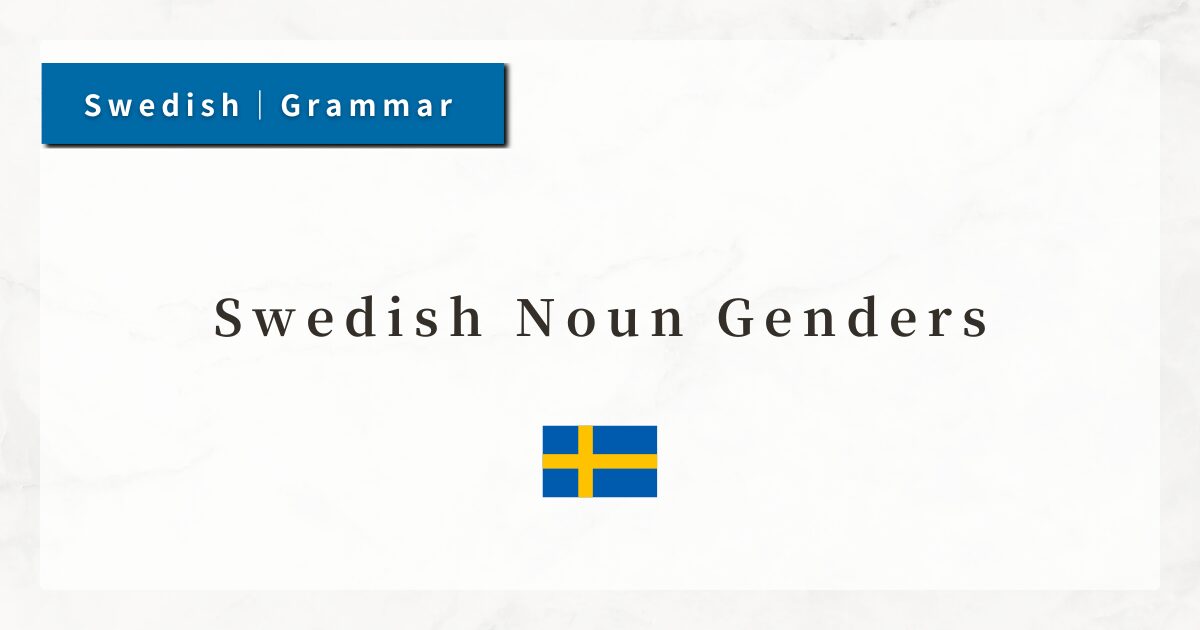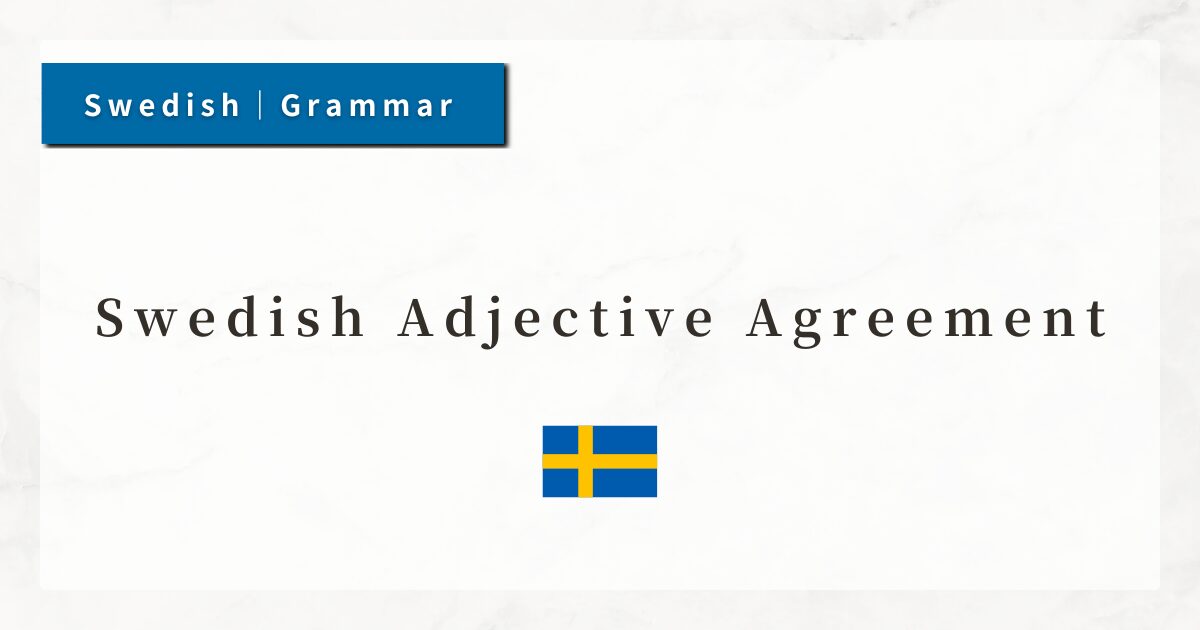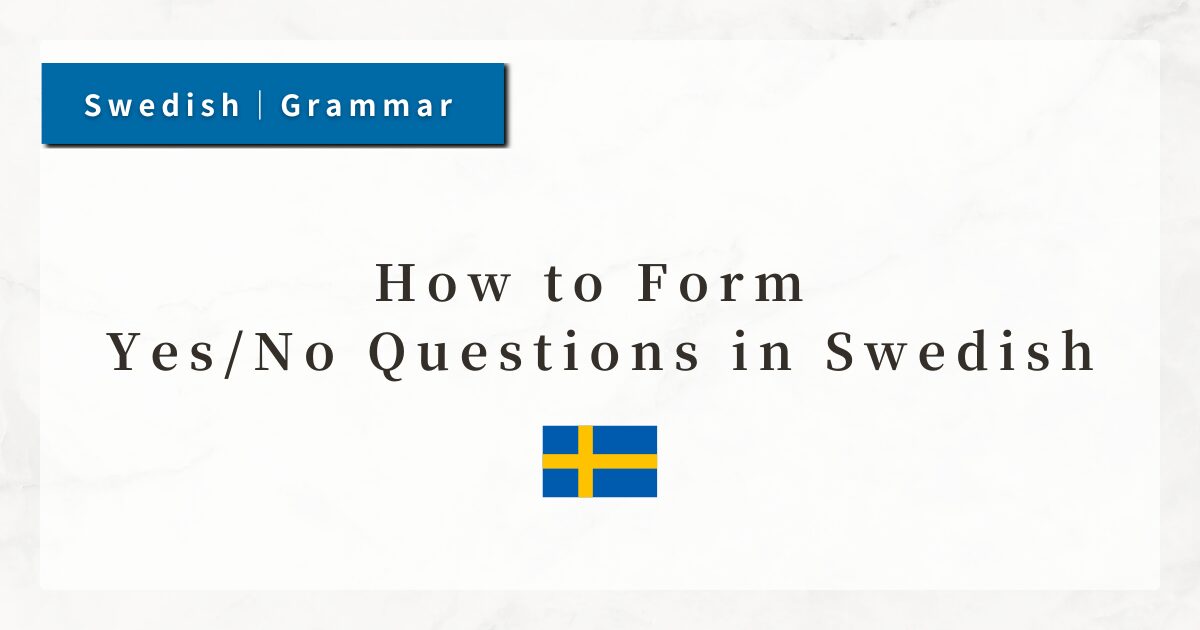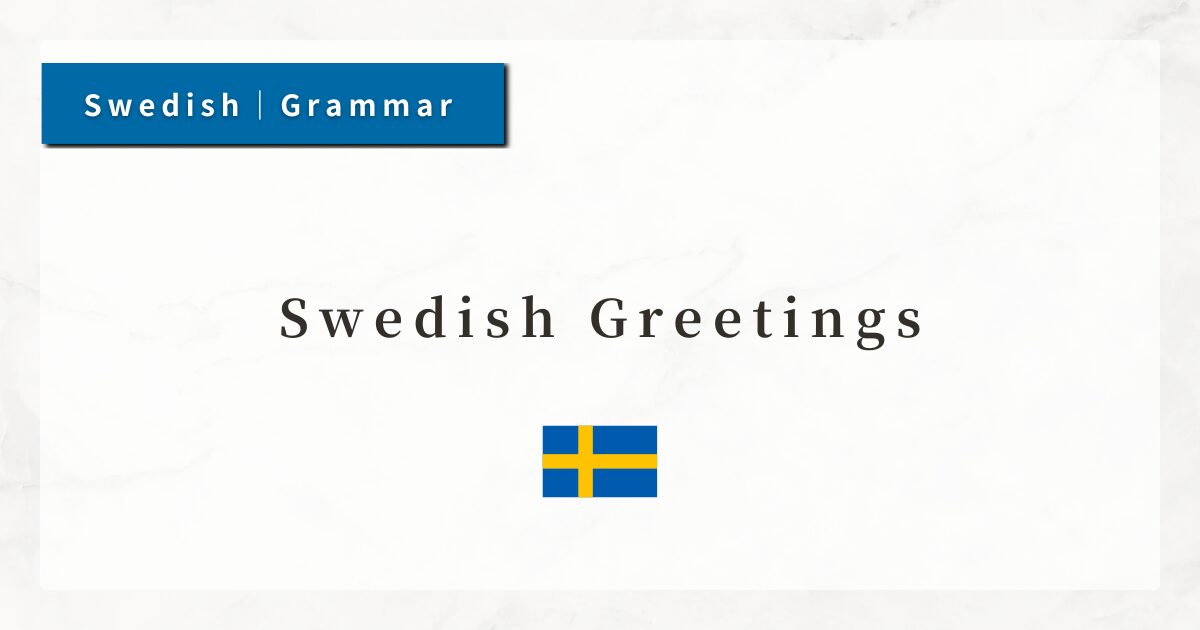#21 Preposed Definite Articles|Usage and Example Sentences
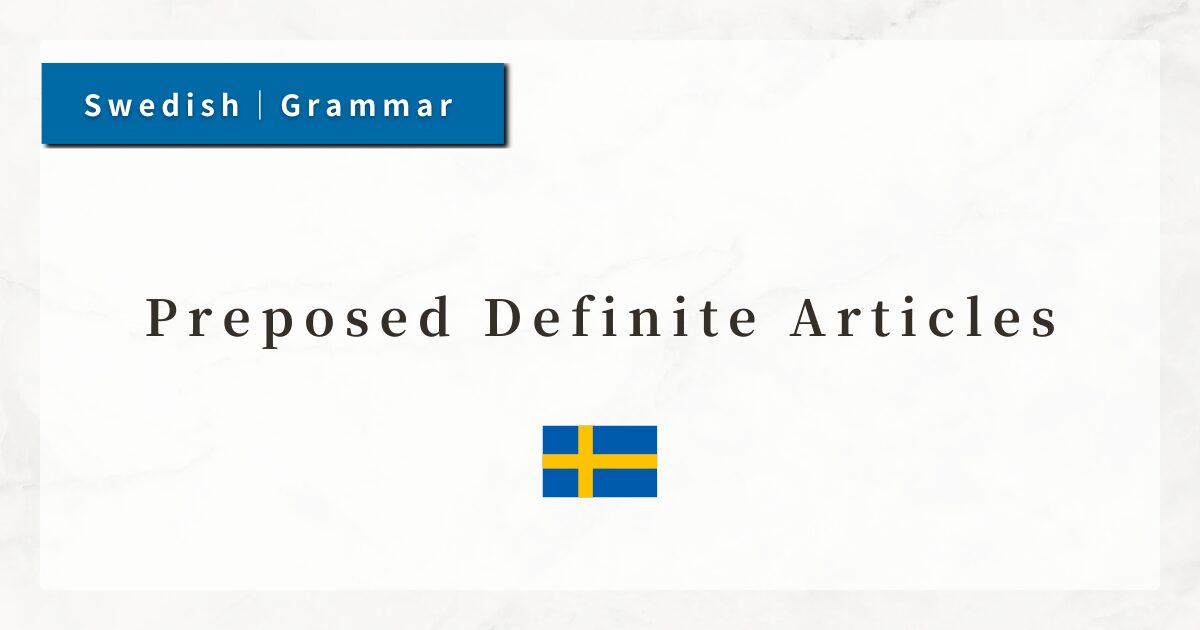
In Swedish, nouns typically take a postposed definite article, which is added to the end of the noun.
However, in some cases—particularly when a noun is modified by an adjective—the definite article appears before the noun, such as den or det. This is called a preposed definite article.
In this lesson, I explain how preposed definite articles are used, how they differ from postposed articles, and the rules for choosing between them.
1. Difference Between Preposed and Postposed Articles
In Swedish, when referring to a specific object such as “the book” or “the house,” the definite form is typically expressed with a postposed article:
- bok (book) → boken (the book)
- hus (house) → huset (the house)
This is very different from English, where the definite article “the” is placed before the noun.
But when the noun is modified by an adjective, the structure changes. For example, “the new book” is expressed as:
- bok (book) → den nya boken (the new book)
Here, the article den is placed before the adjective, while the noun retains its postposed definite article. This double marking clarifies that the speaker is referring to a specific “new book.”
2. Forms of Preposed Definite Articles
Swedish nouns fall into two genders—common and neuter—and the preposed definite article changes depending on gender and number:
- den: common gender, singular
- det: neuter gender, singular
- de: plural nouns (regardless of gender)
Preposed definite articles are only used when an adjective modifies the noun. If no adjective is present, only the postposed article is used.
3. How to Use Preposed Articles
The basic structure is:
- Preposed article(den/det/de) + Adjective (ending in -a) + Noun (with postposed definite article)
Examples:
- den röda bilen
(the red car) - det stora huset
(the big house) - de gamla vännerna
(the old friends)
The key feature is that when an adjective appears before the noun, both a preposed and postposed article must be present.
For learners accustomed to English, this “double marking” may feel unnatural, but it is the correct form in Swedish.
4. Adjective Endings
Swedish adjectives also change form depending on gender and number.
However, in definite noun phrases with preposed articles, the adjective always takes the ending -a, regardless of gender or number:
- en bok
→ den gamla boken (the old book) - ett hus
→ det gamla huset (the old house) - flera vänner
→ de gamla vännerna (the old friends)
In other words, when a definite article is used, the adjective form is simplified: learners only need to remember that it ends in -a.
5. Why Preposed Articles Are Necessary
The reason preposed articles are used with adjectives is that the adjective and noun together form a single definite expression:
- boken = the book
→ refers only to the book itself - den nya boken = “the new book
→ clearly specifies a particular “new book”
If the preposed article is omitted or the noun lacks its postposed article, the sentence becomes grammatically incorrect or unnatural.
6. Practical Examples
| Swedish | Translation | Explanation |
|---|---|---|
| Den långa filmen var tråkig. | The long movie was boring. | den (preposed) + långa (adjective) + filmen (postposed) |
| Det vita huset är vackert. | The white house is beautiful. | det (preposed) + vita (adjective) + huset (postposed) |
| De nya skorna är bekväma. | The new shoes are comfortable. | de (preposed) + nya (adjective) + skorna (postposed) |
As these examples show, adding an adjective changes both the article usage and the word order, making the phrase more complex.
7. Summary
- Swedish uses preposed definite articles (den/det/de) when a noun is modified by an adjective.
- The noun still retains its postposed definite ending (-en / -et / -na).
- The adjective always ends in -a in such constructions.
- This rule ensures that the phrase clearly identifies a specific noun with its modifier.
- For beginners, it is helpful to remember: “When there is an adjective, the article comes in front as well.”

